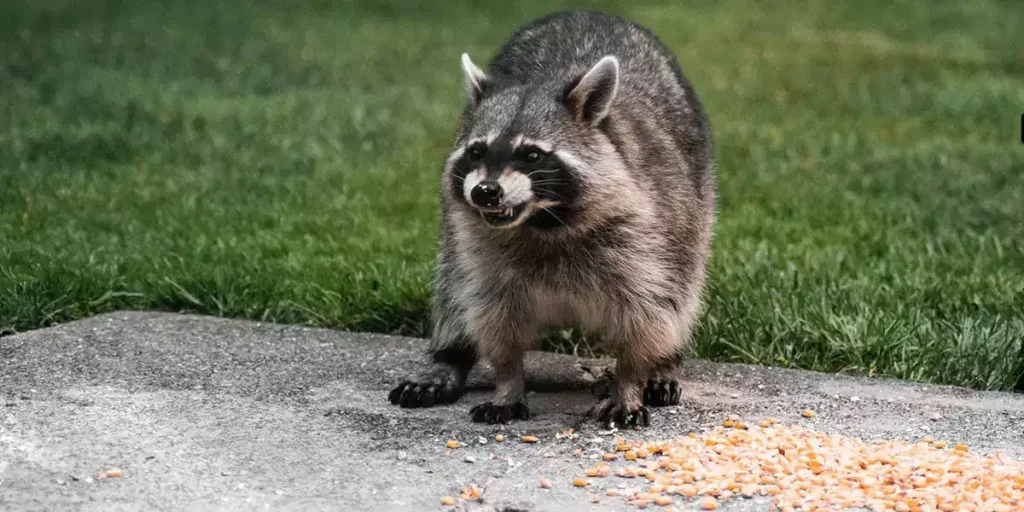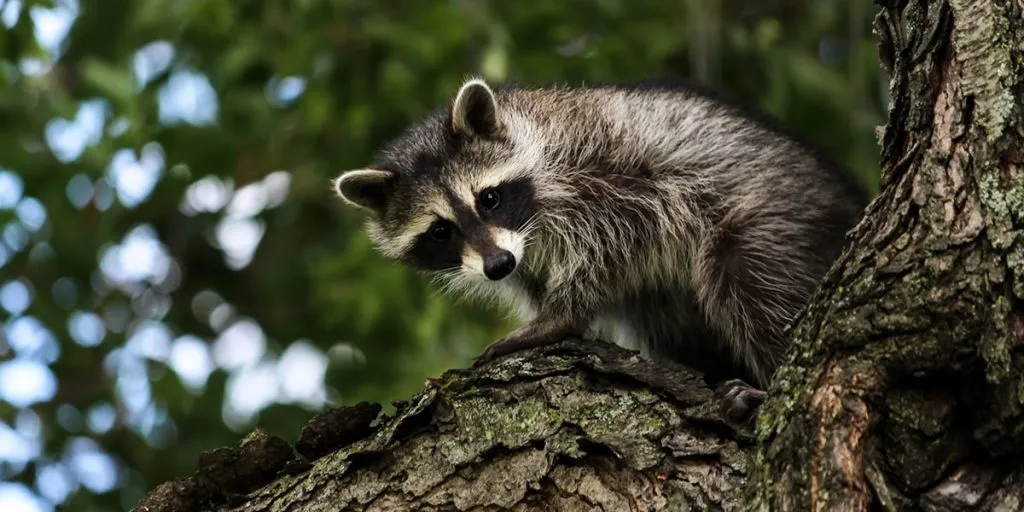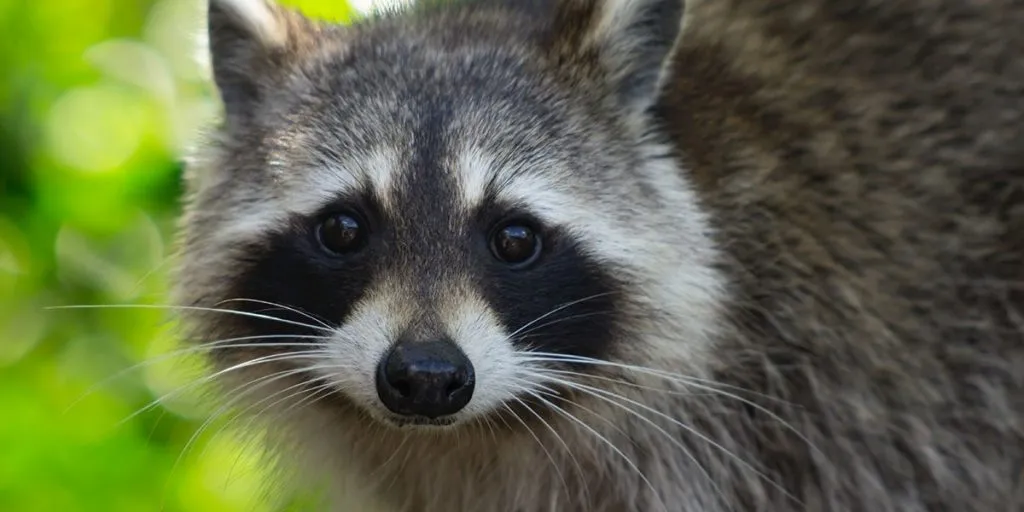Distemper (Canine morbillivirus, also known as CDV virus) is a contagious viral disease found in dogs, but also common in raccoons. Symptoms are not always obvious. The virus attacks the respiratory, gastrointestinal, and nervous systems of the animal.
While humans are not affected by distemper, airborne cross-infection can occur between dogs and a variety of wild animals. Including, but not limited to, the following animals:
- Raccoons
- Foxes
- Coyotes
- Wolves
- Skunks
- Ferrets
- Mink
The distemper virus is extremely persistent and easily spreads, even via humans or objects. It is therefore essential to quickly recognize the symptoms in wild animals. All symptoms get progressively worse when the virus persists. This article discusses the most common distemper symptoms found in raccoons.
1. Fearless Or Confused Behavior
The natural instinct of any wild animal is to run away when encountering a human. This is not the case for a raccoon with distemper. They almost seem docile, even though their confused behavior usually gives away the true reason for their fearlessness.
Strange and confused behavior are among the first signs an (otherwise healthy-looking) raccoon might have distemper. The neurological impact of the virus can show itself in many different ways, including the following behavioral anomalies:
- Disorientation or aimless wandering
- Walking in circles repeatedly
- Drunk or wobbly movements
- Difficulty responding to external impulses
- Complete lack of fear
Every individual with distemper might show different neurological symptoms. If you see this in a wild raccoon in an urban setting, the best you can do is call raccoon removal services. The YouTube video below by Liddle Rascals Wildlife Control Inc is an example of such an urban encounter.
2. Discharge Around Eyes And Nose
When there is a suspicion of distemper, the first thing a professional will do is check up on the eyes and nose. Especially the eyes give away a lot of information. The eyes of a raccoon with distemper will generally excrete a lot of mucous discharge, consisting of excess water and pus.
Not only are these symptoms uncomfortable for the animal, it will also make it harder to breathe and might even limit its vision.
Smaller symptoms usually quickly expand into more health complaints, including a high temperature, coughing, nasal discharge, lethargy, and more. In a lot of ways the symptoms have a lot in common with the rabies virus, but it’s not completely the same.
3. Rough Fur Coat
Whenever you’re encountering news stories around ‘zombie raccoons‘ infected with a virus, the media will almost always refer to the distemper virus. That’s mainly because of the newly acquired strange behavior, in combination with the scruffy appearance of the raccoon coat.
The fur of a raccoon with CDV virus will look quite normal in the early stages of the disease, but tend to quickly deteriorate and get rough or dirty. It’s easy to understand why when you think about it:
- A healthy raccoon contracts the contagious distemper virus
- It starts feeling lethargic and confused
- The sickness spreads and neurological effects start to show themselves
- By now, the raccoon has completely stopped cleaning and taking care of its coat
- The lack of food and essential nutrients further deteriorates the skin and fur of the animal
4. Digestive Problems
The gastrointestinal system, which consists of all the parts of a body responsible for digesting food, is next to be affected by the CDV virus. Distemper will make it almost impossible for a raccoon to ingest and process its food in a normal way.
While the effects of distemper on the digestive system are numerous, the most important symptoms will include the following:
- Vomiting: After ingesting food the body will refuse to process it and the raccoon ends up puking the undigested food remains back up. This deprives the animal of essential nutrients and will amplify other symptoms, such as lethargy.
- Diarrhea: Semi-processed or already processed food still inside the gut will end up coming out in a liquid form. Combined with the zombie-like behavioral state of the raccoon as a result of the virus, this might dehydrate the animal alarmingly fast.
- Lack of appetite: Not wanting to eat food (or refusing to eat anything being offered by a caretaker) is a clear sign of sickness in wildlife such as a raccoon. The animals usually take any opportunity to stuff themselves with whatever they can find.
5. Convulsions Followed By Seizures
One of the most disturbing sights might be the neurological damage the virus can do to a raccoon. In the later stages of the disease, the animal will not only show confused or erratic behavior. The damage to the brain and nervous system can be a direct threat as well.
Just like is often seen in dogs, raccoons will eventually show a variety of worrying symptoms, of which these are the most important to recognize:
- Muscle spasms: Twitching of all major body parts, but also the face muscles. The head might be tilted in an awkward position when spasms occur. This might develop further into other neurological symptoms.
- Jaw chewing: Spasms might get so bad that jaw chewing movements start to occur, often in combination with self-harm of the mouth (chewing gum fits).
- Salivation: Excess saliva will drip from the mouth. This shows a lot of similarities with the rabies virus, but salivation in distemper might be part of a range of other symptoms.
- Seizures: When neurological damage from the virus is too big, spasms, chewing behavior, and salivation symptoms might turn into full-blown seizures. These can be over in mere seconds, but can also take minutes to complete.



